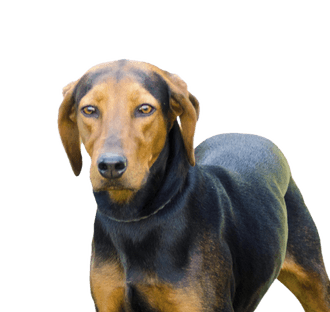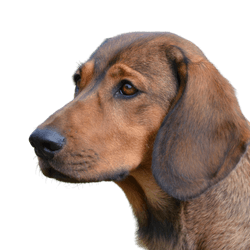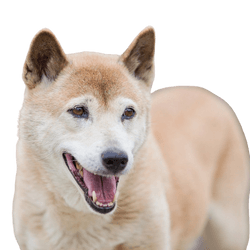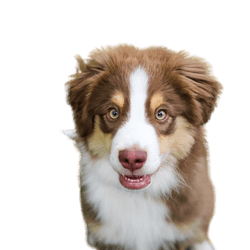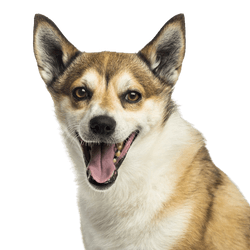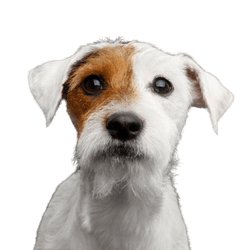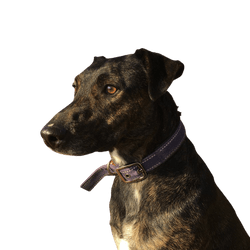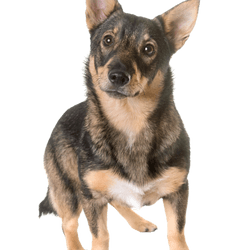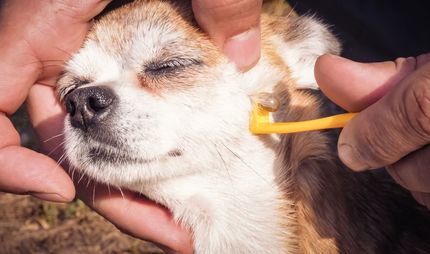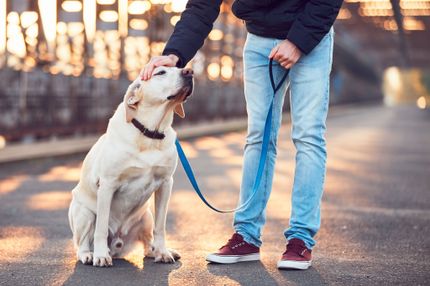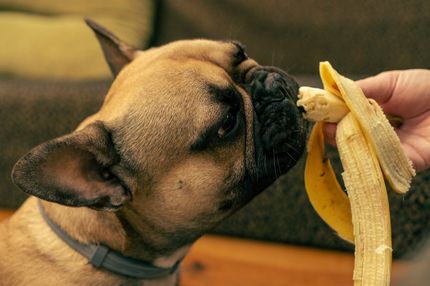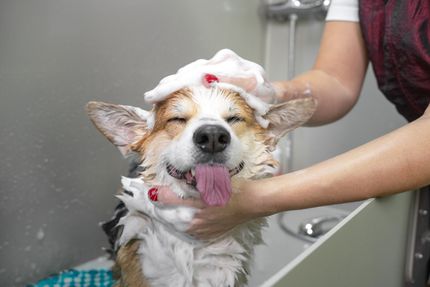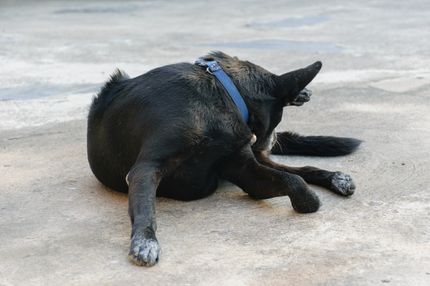Facts & Origin
Origin and use
The Greek hound originates from Greece and is an old, proven hunting dog breed characterized by its excellent nose, great resistance and versatility. It is used both alone and in packs and can work in a wide variety of terrain - from flat plains to rocky, difficult-to-access areas. Its full-sounding, melodious bark is particularly noteworthy and makes it an ideal tracking dog.
Suitability
- Hunting abilities: Originally, the Greek hound was used for hunting game, especially hares. Its fine hearing, distinctive nose and stamina make it an excellent scent hound, capable of tracking game even in difficult terrain.
- Family dog: Despite his hunting past, he is also an excellent family dog. He is affectionate, loyal and good-natured towards family members.
- Exercise requirements: Due to his active nature and need for regular exercise, the Greek Hound is best suited to owners who can provide him with sufficient exercise and activity.
So while he excels at hunting game, he has also proven to be a loving family companion. With proper care and enough exercise, he will undoubtedly become an indispensable member of any family.
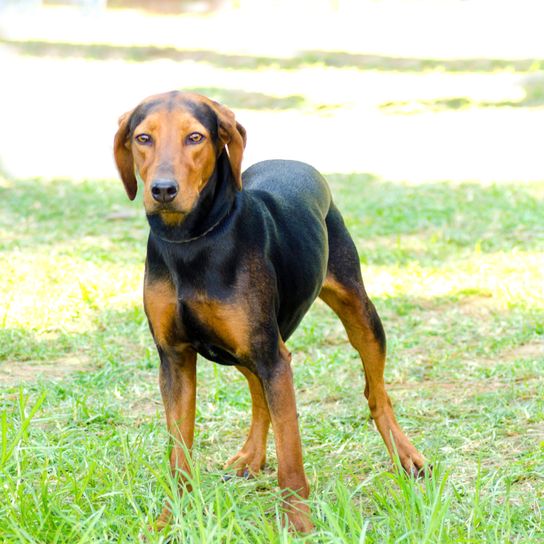
| Alternate Name | Hellinikos Ichnilatis, Greek Bracke |
| Origin | Greece |
| Life expectancy | 10 - 12 years |
| Care requirements | low-maintenance |
| Activity level | high |
| FCI group | Scent hounds |
| AKC group | not recognised |
| KC group | not recognised |
Attitude, character and temperament of the breed
Basic character traits
His nature is lively, keen and eager to work. He is neither aggressive nor shy, but is characterized by a close bond with his handler and a high degree of independence. As a hunting dog, he needs a clear task and plenty of exercise, but is also suitable for active owners who can provide him with appropriate activity.
Social behavior and bond
- Loyalty: This breed is known for its strong bond with its human. They are loyal companions and are protective of their home and family.
- Sociality: Although they get along well with their family, they can be reserved with strangers at first. Early socialization is crucial.
- Training: This intelligent dog benefits from regular training and mental stimulation.
Living with other animals and children
With a proper introduction, they can get along well with other animals, but their hunting instinct can come through with smaller pets. They are also generally child-friendly, but as with all dogs, interaction with young children should be supervised.
Character
Usage
Care of the Hellinikos Ichnilatis
The Hellinikos Ichnilatis is known for its short and smooth coat, which makes it an easy dog to groom. Even though its coat is short, brushing helps to remove dead hair and gives the coat a healthy shine. The dog should only be bathed when necessary so as not to remove the coat's natural oils. Eyes, ears and teeth should be routinely checked and cleaned to prevent health problems.
Health of the Hellinikos Ichnilatis
The Hellinikos Ichnilatis is considered a healthy dog, but some health issues should still be considered: As with many medium to large sized dogs, joint problems can occur.
Their ears should be checked regularly to detect infections or parasites at an early stage.
Breeding the Hellinikos Ichnilatis
Breeding this Greek breed requires knowledge and a sense of responsibility:
- Health examinations: Before breeding, animals should be checked for common health problems.
- Pedigree and temperament: A clear pedigree and a balanced temperament should be taken into account when selecting breeding animals.
The Hellinikos Ichnilatis is not only a proud and loyal companion, but also requires careful care and attention, especially when it comes to its health and breeding. Regular examinations and responsible breeding are key aspects for the well-being of this special breed.


Appearance and build
This medium-sized, short-haired dog has a powerful but elegant build. Its body is slightly longer than its height at the withers, giving it an elongated yet well-proportioned silhouette. The back is long and straight, while the loins are slightly arched and muscular. The croup is sloping, giving him a flowing movement. His chest is deep and well developed, giving him excellent stamina.
The tail is set high, reaches to the hock and tapers towards the tip. When moving, it is carried in a sabre shape, which emphasizes its dynamic appearance.
Head and expression
The head of the Greek Hound is long and narrow, with a slightly domed skull and prominent eyebrow arches that give it an alert expression. The muzzle is strong and of similar length to the skull, with a straight or slightly arched nasal bridge. His black nose is large and mobile, with well-opened nostrils that give him excellent tracking ability.
The dark brown, normal-sized eyes radiate intelligence and alertness. Its medium-length, high-set ears hang flat and close to the head, are slightly rounded at the tips and reach half the length of the head.
Movement and limbs
The Greek Hound has a powerful but light gait, which makes him a fast and enduring runner. Its front and hind legs are strong and well-muscled, with long, sloping shoulder blades that lie close to the body. The elbows are well attached, while the straight, muscular forearms provide stability.
The hindquarters are well angulated, with strong, long thighs and low-set hocks that allow efficient locomotion. The paws are round and compact, with arched toes and robust, hard-wearing pads that provide good grip even on difficult surfaces.
Coat and coloring
The short, dense coat of the Greek hound lies close to the body and is slightly hard in texture, protecting it from harsh weather conditions. Its typical black and tan coloring gives it a striking appearance. A small white patch on the chest is tolerated, while the nose leather, nails and visible mucous membranes are black.
Size and temperament
With a height at the withers of 47 to 55 cm in males and 45 to 53 cm in females, this breed belongs to the medium-sized running dogs. Its weight is between 17 and 20 kg, which keeps it light and agile.
| Fur length | short |
| Fur | flat coated |
| Ear shape | Floppy Ear |
| Tail | lang |
| Anatomy | sporty |
| Size ♀ | 45 - 53 cm |
| Weight ♀ | 17 - 20 kg |
| Size ♂ | 47 - 55 cm |
| Weight ♂ | 17 - 20 kg |
| Suitable For | - |
FAQ
-
The Greek hound originates from Greece and is a traditional hunting dog breed that has been used for centuries to hunt hares and other game.
-
It is an enduring and versatile running dog that works both alone and in a pack. Thanks to his excellent nose and powerful voice, he can track and indicate game over long distances.
-
It can be a loyal companion in an active household.
-
The Greek hound is very persistent and needs a lot of exercise every day. Long walks, tracking work or hunting training are ideal to keep him physically and mentally active.
-
As it was traditionally bred as a pack dog, it is social and compatible with other dogs. Good socialization at a young age ensures balanced behaviour.
-
He is intelligent, but also independent, as he was bred to hunt on his own. Consistent training with positive reinforcement is necessary to make him listen to commands reliably.
-
Due to his strong hunting instinct, free running is only recommended in securely fenced areas or after intensive recall training. He can be difficult to recall if he sees game.
